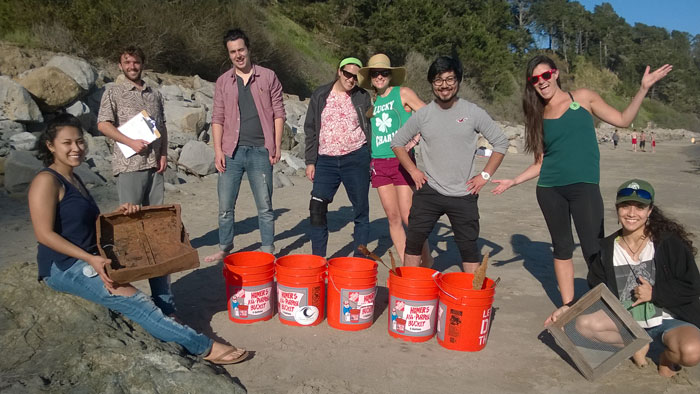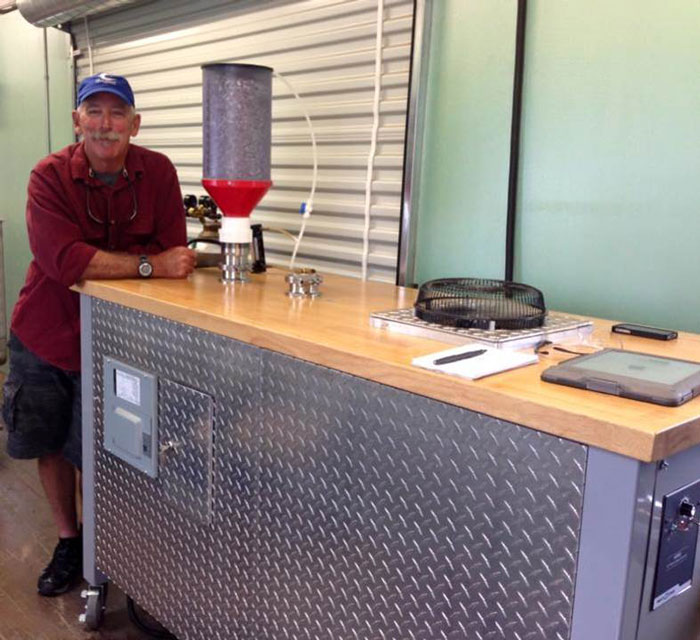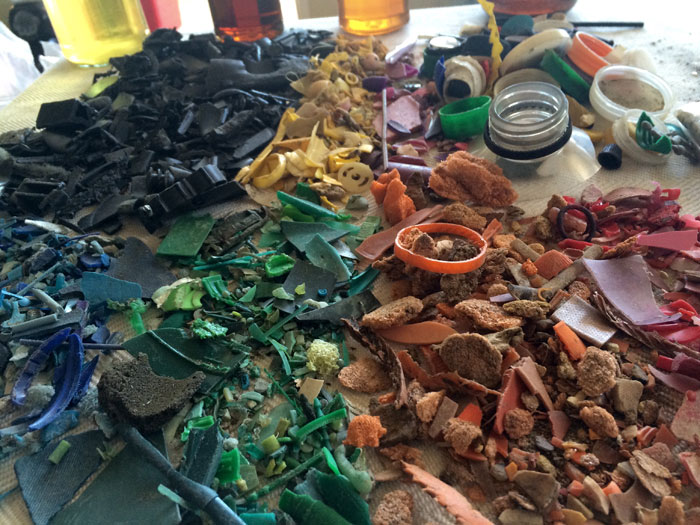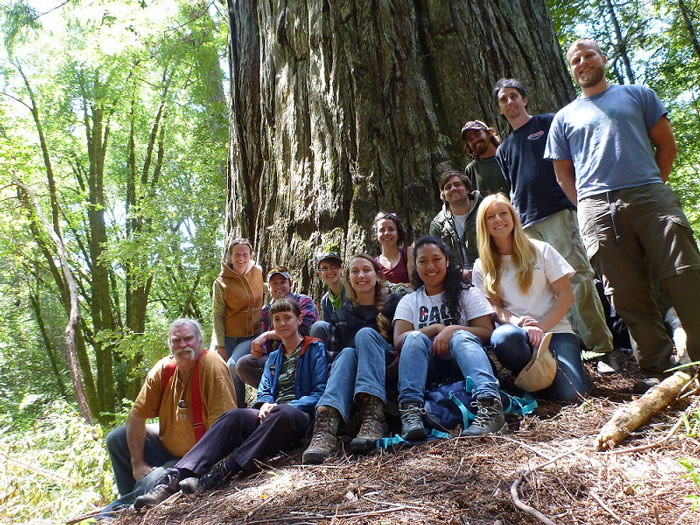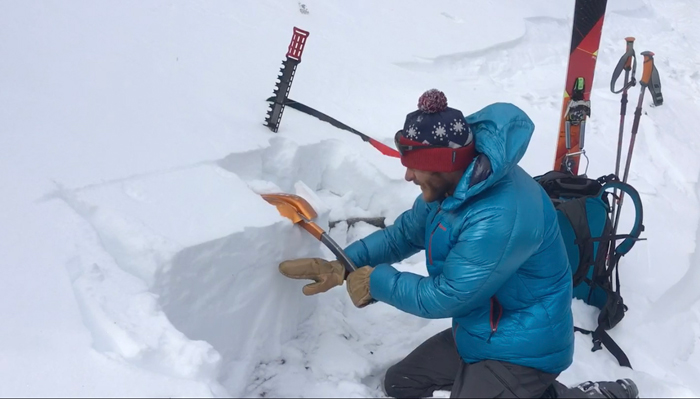- Death Valley’s Battle With Climate Extremes - 01/01/2024
- The Future of Homewood - 12/05/2023
- Kula Cloth - 10/18/2023
One man’s quest to save the sea
By Leonie Sherman
“I’m probably at the age where I should be retired,” says Jim Holm, founder of Clean Oceans International. He glances out his office window at the bustling Santa Cruz Harbor. “Instead I’m just really tired.”
Thirty-five years as a boat captain will tire anyone out. But Holm –everyone calls him Captain Homer – isn’t tired from sailing the world. He’s tired because four years ago he started a non-profit called Clean Oceans International with the simple goal of cleaning up all the trash floating around in the world’s oceans. National Geographic estimates that there are 5.25 trillion pieces of plastic debris out there.
“I was working on this boat called the 2041, with a Brit named Robert Swan,” Captain Homer explains. 2041 is the date that the international moratorium on oil and mineral exploration in Antarctica expires, and Swan was trying to raise awareness to make that ban permanent. They got stuck in Panama, waiting for a a hurricane to pass. One day they took a break from boat repairs and swam to a tiny nearby island.
“We were shocked to find that whole island completely covered in trash,” Homer says. “And I immediately recognized that it was mine. I’m a well-off white boy in a civilized world, and we caused this. We embrace convenience and it’s crushing us.” Captain Homer pauses. “I had a responsibility to see what I could do about it.”
Having already reached tens of thousands of people with marine education programs, he was uniquely suited to make an impact. In 1996 he set up the curriculum for O’Neill’s Sea Odyssey, a living classroom aboard a 65-foot catamaran plying the waters of the Monterey Bay Marine Sanctuary. Since then, the award-winning program has educated over 80,000 grade school students about marine conservation. Eight years later he started a program aboard another 65-foot research vessel, this time for the Monterey Bay Aquarium.
“We called it Science Under Sail,” Homer explains. “We took folks for a three hour tour and would just talk about whatever we saw. We’d see seals, sea otters, kelp … and trash.” He shakes his head. “So we started talking about trash. And pretty soon that became ‘plastics overboard.’” He grows animated as he explains. “Whenever someone saw trash they would cry out ‘plastic overboard!’ and we’d treat it like a person had fallen overboard. We would maneuver the boat around and passengers would handle the net and scoop up the trash,” Captain Homer beams.
Letters of praise flooded the aquarium. “People really want to understand what’s going on and be part of the solution,” explains Homer. “We weren’t creating entertainment out there, some kind of a marine Disneyland. We created a real life research experience. I think people like that more than being entertained.”
His next project was aboard 2041 with Robert Swan. After his epiphany off the coast of Panama, he returned to California with newfound zeal. Captain Homer and some friends started the Clean Oceans Project in 2009. “Our intention was to clean up all the trash floating around in the world’s oceans.” Newsweek magazine estimates all that debris weighs about 270,000 tons. “Our plan was too grandiose, we found it impossible to raise the necessary funds,” explains Homer. “In 2012, everyone went home, except for me.”
He redirected his energy towards his area of expertise: education. In the past four years, under the name Clean Oceans International, Captain Homer has established flourishing relationships with students at Cabrillo College and UC Santa Cruz. “We give them the opportunity and motivation to take action about the enormous problems facing our world’s oceans today,” Captain Homer says.
“Homer has been doing guest lectures for Oceanography classes eight semesters now,” says David Schwartz, the department chair of Geology, Oceanography and Environmental Science at Cabrillo. “They’re great, engaging lectures and have inspired students to do a lot of tabling around town, raising awareness about these issues.”
“As Homer networks with other groups around the world, we’ve started doing expeditions that include our students,” explains Schwartz. “In May of 2014, we traveled to tiny Montague Island in Alaska’s Prince William. In just under five days, Homer and five students collected 20 tons of trash.” That effort was overseen by the Gulf of Alaska Keeper, who haul the debris away by helicopter, put it on a barge to Seattle and then sort, reuse and recycle as much of it as possible.
In January 2016, they took eight students to Hawaii for eleven days, where they did beach clean ups and toured a waste management plant that incinerates trash to produce energy. “That facility provides 8-10% of the energy on Oahu,” explains Schwartz.
Which dovetails neatly with Homer’s driving passion. In addition to inspiring the next generation of stewards and cleaning up beaches all over the world, Captain Homer thinks he has figured out how to convert all that plastic debris into a valuable commodity. “Previously even if we got trash out of the oceans, all we could do was get it to shore and put it into the waste management system. But we are working on a system that will convert that plastic trash to diesel fuel,” Homer explains. “We are turning our waste products into an economic benefit.”
Homer claims the process is quite simple: you heat trash until it vaporizes and then cool it until it condenses into liquid fuel. With the assistance of UCSC students, Homer is working hard to perfect the machinery that powers this conversion, currently housed in a trailer on the community college campus. They need to understand the true energy input to determine how energy efficient the process might be. They’re hoping to perfect the technique and then begin marketing it.
Ultimately they might be able to power a boat touring the Pacific Gyre, where the world’s biggest mass of floating plastic debris concentrates, and power the boat with the trash they pick up. That’s the vision they are working towards. For now they keep their focus on reducing the trash that winds up in the oceans, and converting the waste into something useful. “We are transforming a nuisance disposal issue into a resource recovery opportunity,” explains Homer. “Of course, funding is always an issue, but there’s a tremendous amount of motivation to do this.”
Now over 60 years old, he shows no signs of slowing down. He just got back from a two-week expedition to Brazil and plans to get married later this year. He still finds time for daily maintenance on his equipment at Cabrillo. People marvel at his tireless devotion to our planet’s oceans. “Ultimately we are a nation of consumers, and that’s what is driving the plastic problem,” he explains. “At the same time, giving up is not an option, no matter how overwhelming the problem appears. So I ask myself, each day, how can I make the biggest difference?”

